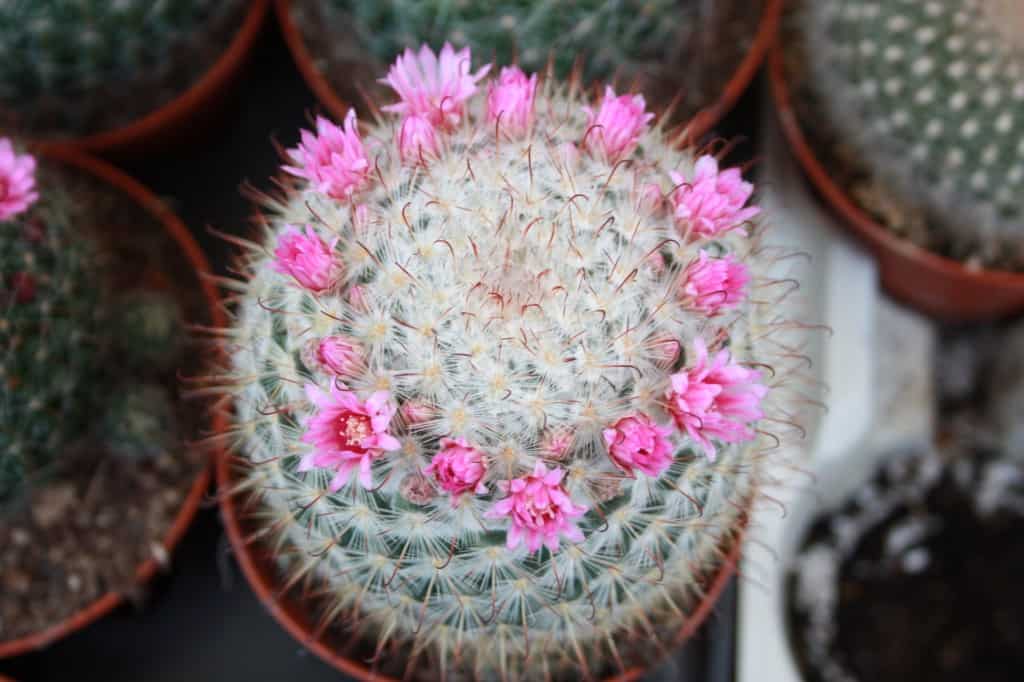The sum and kinds of plants differ to wherever the desert is situated. Many of us think that there are only limited list of plants that could make it in this steamy and dry place. In fact there are a lot of species to be found in the desert. In Plant forms, the category are: wild flowers, Cactus, Grasses, Shrubs, and Trees and. Here are some lists to be familiar of:
Wild Flowers
They are short lived also known as ephemerals. Though they have limited life span, the survival rate is pretty fair. Annual wildflowers stay dormant as seeds during the desert’s most tremendous conditions. When there is enough rain, the seeds swiftly germinate, grow, blood. When the temperature rises again they go back to seed again. Wildflowers can attract huge numbers of pollinators such as butterflies, moths, bees and hummingbirds. Well-spaced rainfall during the winter and spring, ample warmth from the sun, deficient of drying winds would make good wildflowers.
Blue and Purple Wildflowers
• Desert Lavender
• Indigo Bush
• Smoke Tree Spanish Needles
• Chia, Filaree Storksbill
• Bigelow’s Monkey
• Flower Coulter’s Lupine/Desert Lupine
• Sand Verbena, Mojave Aster
• Desert Willow
• Blue Phacelia
Pink, Red, & Orange Flowers
• Ocotillo
• Englemann Hedgehog / Strawberry Cactus
• Beavertail Cactus, Fairy Duster
• Desert Globemallow, Desert Paintbrush
• Chuparosa
• Desert Five-Spot -Pincushion Cactus / Fishhook Cactus
• Desert Mariposa Lily, Winged Dock
Yellow & Gold Flowers
• Creosote Bush
• Cinchweed
• Desert Sunflower
• Dune Sunflower
• Mexican Gold Poppy
• Desert Primrose / Yellow Cups
• Wooly Daisy
• Barrel Cactus
• Englemann’s Prickly Pear
• Desert Dandelion
• Parry’s Century Plant
• Golden Prince’s Plume
White Flowers
• Saguaro Cactus
• Sacred Datura
• Spectacle Pod – Desert Lily
• DuneEvening Primrose Desert Chicory
• Desert Star
• Prickly Poppy / Thistle Poppy
• Joshua Tree
• Banana Yucca
• Blazing Star
• Brown-eyed Evening Primrose
• Narrow-leaved Popcorn Flower
• Ghost Flower
• Mohave Yucca
• Soaptree Yucca
• Apache Plume
Cactus
Cacti are the common plants found in deserts. Unlike plants with chunky foliage and thin stems. Cactus has thick and differently shaped succulent stems and leaves. These plants are large and expand their stems to store water. When it rains, their large system roots absorb the water and store it in their stems. The spikes or also known as their modified leaves, reduce the plant’s transpiration. Other than long lifespan of these plants, it grows fast too. Here are some of the species of the cactus plants.
• Acuna Cactus
• Barrel Cactus
• Beavertail Cactus
• Century Plant
• Chain Fruit Cholla
• Cholla Cactus
• Claret Cup Cactus
• Desert Christmas Cactus
• Datil Yucca
• Engelmann’s Hedgehog Cactus
• Fishhook Cactus
• Mojave Yucca
• Night-Blooming Cereus
• Old Man Cactus
• Organ Pipe Cactus
• Prickly Pear Cactus
• Saguaro Cactus
• Senita Cactus
• Soaptree Yucca
• Thornber’s Pincushion Cactus
• Yellow-spined Hedgehog Cactus
Grasses, Shrubs, and Trees
We dont find these plants anywhere else. The desert plants are characteristically beautiful in their own way. They are sturdily built to adapt the steamy and dry nature of the desert. These are some of the beautiful plants to learn about:
• Bastard Toadflax
• Crucifixion Thorn
• California Fan Palm
• Cocklebur, Cottonwood
• Creosote Bush
• DesertLavender
• Desert Willow
• Elephant Tree
• Greasewood
• Indigo Bush
• Joshua Tree
• Juniper
• Mormon Tea
• Ocotillo
• Mesquite Tree
• Palo Verde Tree
• Poison Ivy
• Ponderosa Pine
• Four-Wing Saltbush
• Showy Milkweed
• Smoke Tree
• Stinging Nettles
• Tumbleweed
• Whitethorn Acacia
• Winterfat
Did you know that?
Cardon is one of the tallest cactus species in the world, with a maximum recorded height of 19.2 m (63 ft), with a stout trunk up to 1 m (3.3 ft) in diameter bearing several erect branches. Its flowers are white, large, nocturnal, and appear along the ribs as opposed to only apices of the stems and can be found in Sonoran Desert.

